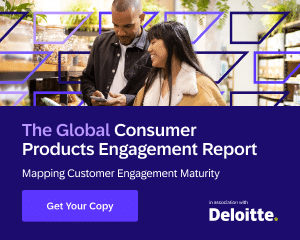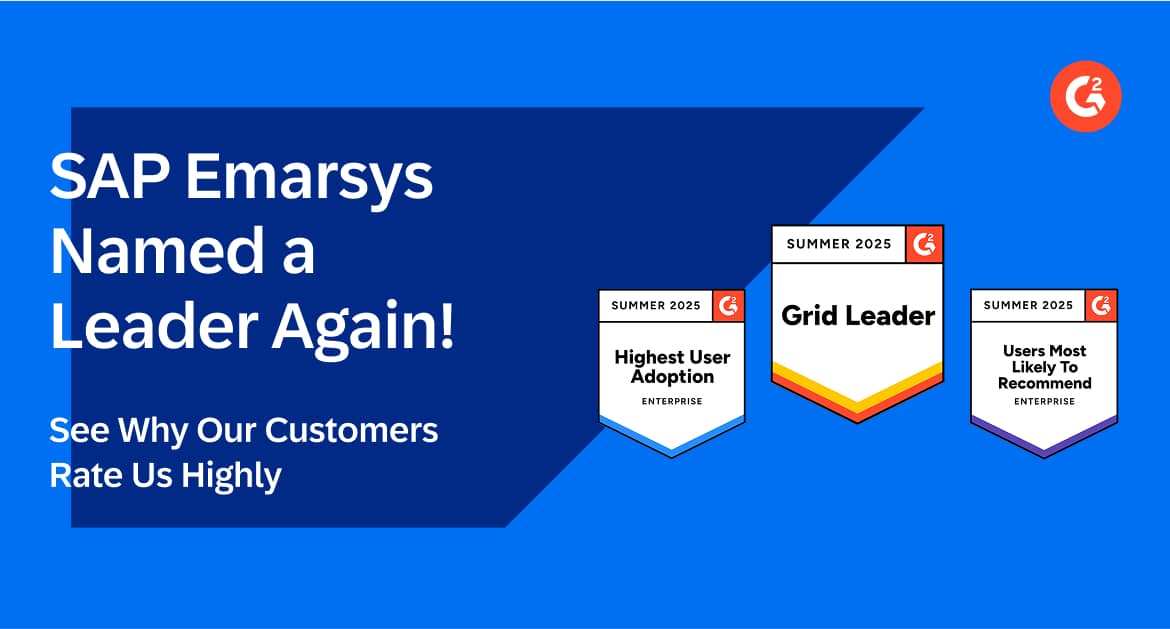From in-store to in-app to online, regardless of where your customers shop with your brand, they expect a connected, personalized experience.
In the past, true omnichannel marketing required significant investment from brands. But the growth of martech has significantly lowered the barriers to entry.
So, with customer expectations rising, and more and more tools available in the market to help you meet those expectations, now is the time to prioritize personalized, omnichannel marketing.
In this article, we’ll discuss all things 1:1 omnichannel personalization, giving you actionable advice to start integrating omnichannel personalization into your broader marketing strategy.
What is omnichannel personalization?
Omnichannel personalization is about providing customers with uniquely tailored shopping experiences, based on their personal preferences and individual history, consistently and seamlessly across all touchpoints a brand offers.
Customers are no longer single-channel shoppers, and they expect consistent 1:1 experiences, no matter which channel they choose for engaging a brand. Whereas some brands can only provide personalized customer experiences on a channel-by-channel basis, the brands who are most successful with omnichannel marketing unify their data to ensure continuous and consistent personalized interactions for individual customers as they move across channels.
Why is omnichannel personalization important?
Without personalization, the online experiences you create for customers will feel less like cultivated experiences and more like batch-and-blast, generic campaigns.
Each day, 333 billion emails are sent, and your customers are on the receiving end of that sensory overload.
One thing is clear. From email to Instagram, if you’re creating generic, batch-and-blast content, you’ll find it hard to secure your audience’s attention — and once you have their attention, you’ll find it even harder to maintain it.
If you’ve started personalizing campaigns but do it in isolation across only a few channels, the result won’t be much better. Why? Because customers who channel hop and engage with your brand across multiple touchpoints will be met with a disconnected experience that underdelivers on value and relevance.
Omnichannel personalization plugs this gap.
By integrating your marketing channels and enriching your cross-channel campaigns with customer, product, and sales data, you’ll be able to deliver a compelling, consistent brand experience that turns initial interest into lasting engagement, and lasting engagement into customer loyalty.
How to get started with personalized omnichannel marketing
Looking to make the jump to personalized omnichannel marketing? Here’s where to begin.
Define your strategy
If you want to give your omnichannel personalization strategy and your business as a whole the best shot at success, you need to have a rock-solid understanding not only of your customer lifecycle, but also the key moments of influence in that lifecycle. These crucial moments can be the difference between a potential customer completing the desired action, or bouncing.
Once you have a firm grasp of the customer lifecycle and moments of influence, you can work out the key metrics and outcomes you need to drive at each of the stages.
For most e-commerce and retail businesses, the key moments of influence are broken down into three clear stages:
1. Generating awareness
What tactics do you use to grab customer attention and build awareness of your brand and products before customers visit your website or retail location?
Key metrics to track:
- Reach
- Engagement
- Cost per thousand views (CPM)
- Click-through rate (CTR)
- Bounce rate
By breaking down data silos and integrating their marketing technology, Love, Bonito improved their lead to first-time buyer conversion by 67%.
2. Driving conversion
While customers are in your store or browsing your website, you’ve got their attention. So, what can you do to drive them to purchase?
Key metrics to track:
- Abandoned cart rate
- Conversion rate
- Highest-performing products
- Average order value
By focusing on omnichannel personalization and sending the right messages to the right people at the right time, clothing brand PUMA gave engaged customers reasons to convert, delivering 5x revenue growth in just 6 months.
3. Engaging the customer post-visit
After a customer has made a purchase, what are you doing to keep them coming back for more?
Key metrics to track:
- Customer lifetime value
- Customer Satisfaction Score
- Repeat purchase
Pizza Hut created and launched a loyalty program to entice customers back time and time again. This resulted in a 33.8% increase in engagement.
Connect in-store and online customer data
If you want to deliver a truly personalized, integrated omnichannel experience, in-store and online can’t exist as separate entities. You need to connect your online and offline data and start matching in-store customers to their online activity.
Once you’ve achieved this, you’ll start to notice occasions where the two paths cross.
For example, perhaps a customer buys something in-store, and the email they give for their digital receipt matches a customer who recently abandoned a cart online.
Alternatively, maybe you come across a contact with a consistently high average order value and frequency online, but you find out they actually return 90% of what they buy in-store. Having these insights can improve your personalization and overall marketing efforts.
Enhance your operational efficiency
If your data doesn’t exist in a silo, your operational teams shouldn’t either. When sales and customer service are kept separate from marketing, you create inefficiencies that trickle down and weaken your customer experience.
So, if you haven’t already, consider adopting an agile approach to managing your omnichannel marketing campaigns.
By building an agile marketing team, you’ll bring together individuals from other departments to work together and help your brand deliver the omnichannel personalization you’re aiming for.
4 key strategies to deliver omnichannel personalization at scale
Let’s look at four key strategies your marketing team should focus on to start delivering omnichannel personalization at scale.
1. Create email campaigns triggered by key cross-channel events
Your customers can smell batch-and-blast emails a mile off, and with the increasing uptake of personalization engines in the market, generic emails are no longer going to cut it.
This gives you a golden opportunity to set your brand apart from your competition.
By integrating email with your other marketing channels, you unlock a world of omnichannel personalization potential:
- Personalized product recommendations: Instead of generic sales emails, put your customer, product, and sales data to work. Create dynamic campaigns enriched with personalized product recommendations based on each recipient’s online shopping habits, or items similar customers have bought. Take it one step further and connect email to in-store, following up on purchases with personalized emails that upsell to related products.
- Emails triggered by specific events: Build reactive campaigns that respond to your customers’ cross-channel activity. Noticed a customer viewing the same product multiple times without completing a purchase? Entice them to make the purchase with a personalized coupon code. Product size out of stock in-store? Use digital display to help customers order the right size to their home address, and follow up by email with relevant upsells to add onto their order.
With the right customer engagement platform and email marketing software, the possibilities for event-based omnichannel email are virtually limitless.
2. Bring the digital world in-store
The digital world is evolving quickly — don’t leave your physical retail locations behind. Enhance the in-store shopping experience by matching customers to their online activity.
By matching your in-store customers with their digital accounts, you can:
- Increase traffic with geofenced notifications: Target nearby customers with personalized mobile notifications that promote store-specific sales or restocks on popular items.
- Offer personalized shopping experiences: Armed just with a tablet, in-store staff can identify previously unknown customers and help them pick out items that complement their online purchases.
- Provide targeted upsells at the checkout counter for items that might have been out of stock in-store
- Sign customers up for push notifications so they’re the first to know about in-store sales or restocks on hot-selling items.
If you’re still waiting to make the jump between connecting in-store and online customers, try integrating your checkout software with your customer engagement platform and collect email data by offering to send a digital receipt to your customers’ inboxes.
3. Connect customer service with product and sales data
Disconnected customer service experiences are a fast way to burn bridges with previously loyal, engaged customers. There’s nothing worse than having to repeatedly give the same information to multiple customer service agents.
By connecting your customer service teams with your product, sales, and customer data, you’ll give them the information they need to provide personalized service that quickly resolves issues — and even has the power to drive revenue.
4. Use AI chatbots to deliver personalized product recommendations
The chatbot market is forecasted to hit $1.25 billion by 2025, and for good reason.
With a chatbot live on your site, you can take customer service beyond reactive interactions, and enrich your customer’s online experience by proactively reaching out to them at key stages in their journey.
This can all be achieved without manual intervention — chatbots can handle the heavy lifting.
And with surveyed business leaders stating chatbots helped increase sales by 67%, it’s a strategy your store should seriously consider.
Omnichannel Personalization with Emarsys
Building a personalized omnichannel marketing strategy isn’t always easy, but Emarsys can help you overcome your omnichannel personalization challenges.
With Emarsys, you can effortlessly integrate your product, sales, and customer data with your marketing channels, all from within one single industry-leading customer engagement platform. We help brands boost engagement and grow loyalty by engaging the right customers with the right content, at the right time.












